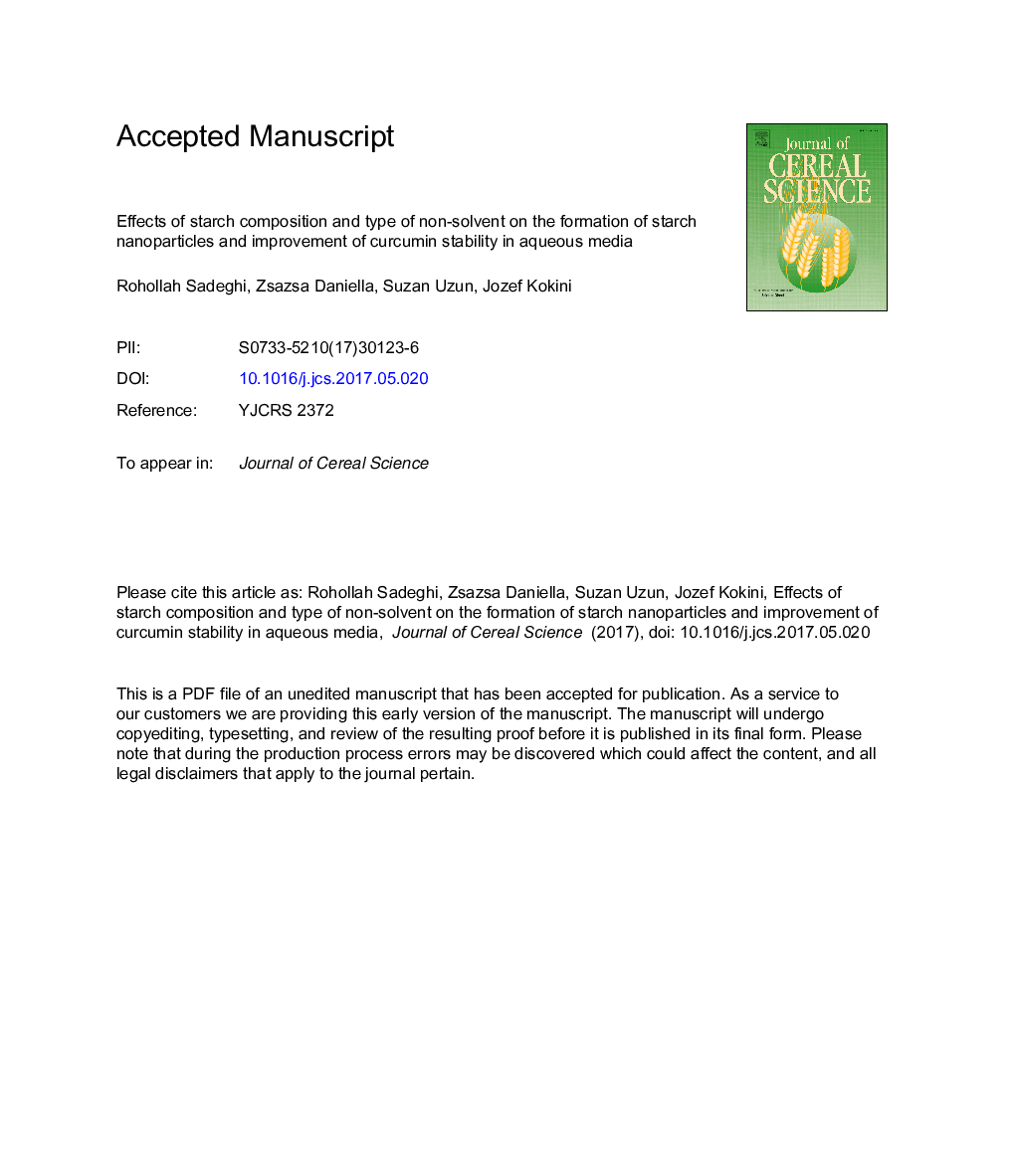| کد مقاله | کد نشریه | سال انتشار | مقاله انگلیسی | نسخه تمام متن |
|---|---|---|---|---|
| 5762319 | 1624886 | 2017 | 23 صفحه PDF | دانلود رایگان |
عنوان انگلیسی مقاله ISI
Effects of starch composition and type of non-solvent on the formation of starch nanoparticles and improvement of curcumin stability in aqueous media
دانلود مقاله + سفارش ترجمه
دانلود مقاله ISI انگلیسی
رایگان برای ایرانیان
کلمات کلیدی
موضوعات مرتبط
علوم زیستی و بیوفناوری
علوم کشاورزی و بیولوژیک
علوم زراعت و اصلاح نباتات
پیش نمایش صفحه اول مقاله

چکیده انگلیسی
In this study, we evaluated the effects of amylopectin/amylose ratio and non-solvent type on starch nanoparticle formation including the average particle size, polydispersity index, size distribution, and nanoparticle morphology using dynamic light scattering (DLS) and scanning electron microscopy (SEM). The most uniform particles were obtained from normal corn starch with ethanol. The average particle size was 98.8 ± 1.8 nm using DLS while combination of size distribution study and SEM images showed that particle size ranged between 60 and 90 nm. A bimodal distribution was observed with two defined groups of nanoparticles when waxy corn starch (Amioca) was nanoparticulated with ethanol. SEM images of freeze dried samples and DLS size distribution curves of fresh samples showed that high amylose starch including Hylon V and Hylon VII gave uniform, spherical and small nanoparticles in the size range of 20-60 and 15-50 nm, respectively. The smallest nanoparticles were fabricated by precipitation with methanol, followed by ethanol and the largest nanoparticles were formed using acetone. Re-dispersion of nanoparticles was good when nanoparticles were fabricated using ethanol and acetone especially for Amioca, whereas redispersion of samples in aqueous PBS solution, precipitated using methanol was difficult especially in the case of Hylon VII. Stability of curcumin in the presence of 1 mg/ml native starch nanoparticles was much higher (83.7 ± 3.1%) than curcumin in phosphate buffered saline at pH 7.0 (5.5 ± 1.5%) over 10 days at ambient temperature. Interaction between iodine-potassium iodide solution and starch nanoparticles showed that the helical structures of amylose and amylopectin molecules remain in the nanoparticles and curcumin may interact with these helical structures giving it the stability which is not observed in water.
ناشر
Database: Elsevier - ScienceDirect (ساینس دایرکت)
Journal: Journal of Cereal Science - Volume 76, July 2017, Pages 122-130
Journal: Journal of Cereal Science - Volume 76, July 2017, Pages 122-130
نویسندگان
Rohollah Sadeghi, Zsazsa Daniella, Suzan Uzun, Jozef Kokini,